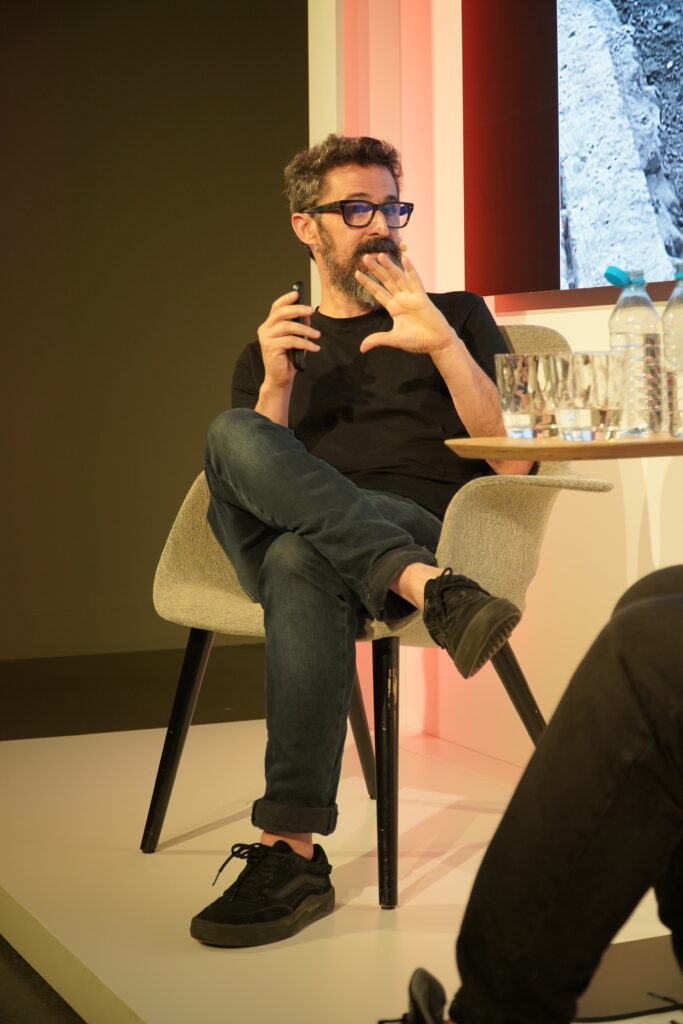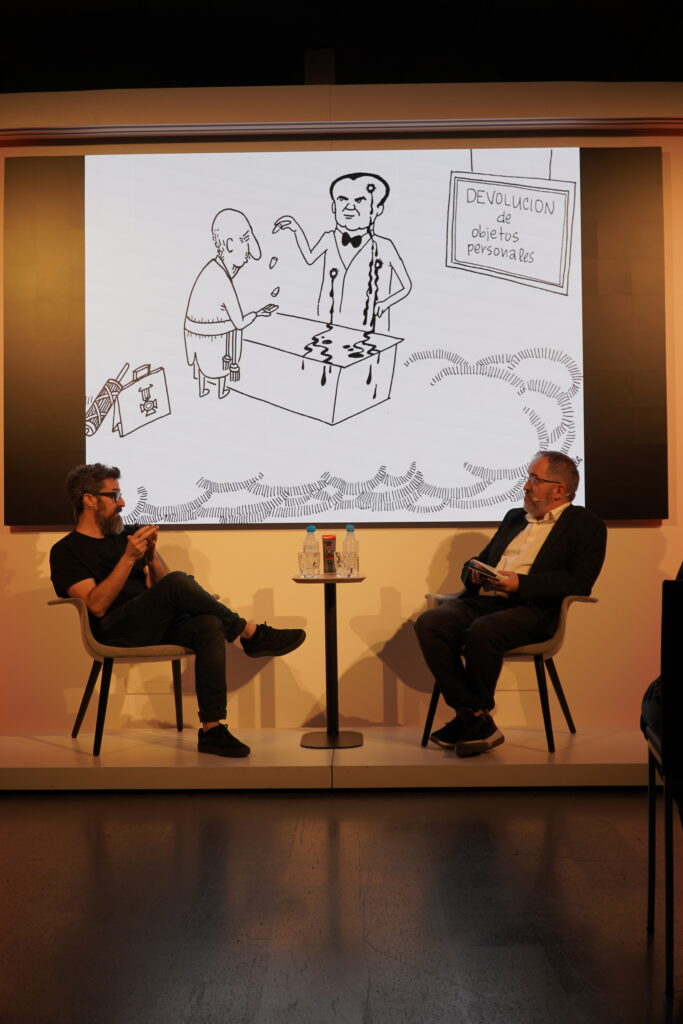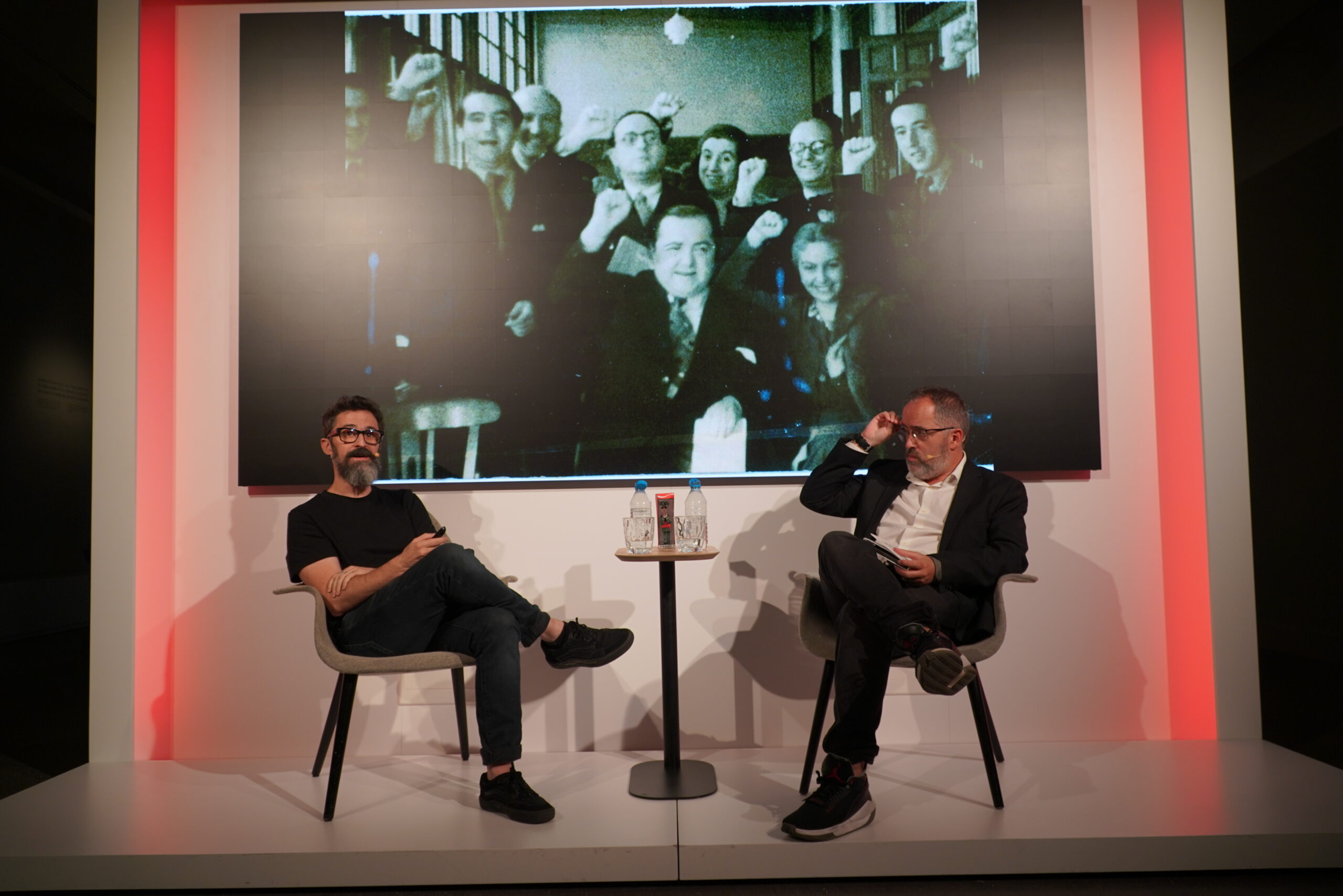“Spain is a great common grave”, this is how artist Eugenio Merino put it in the conversation entitled The Most Famous Disappeared Person in the World that he led together with journalist and specialist in the figure of Federico Garcia Lorca, Victor Fernandez.
They started the talk by analyzing the sculpture of Lorca in the Plaza Santa Ana in Madrid, and remarked that it represents a Lorca that does not move and that links with the false theories that have been built around the figure of the poet. “Lorca did not want to know anything about the phalange and yet it is perverted and perverted that Lorca was apolitical”.
Precisely Eugenio Merino embarked on the Lorca project after reading the book on the poet edited by the community of Madrid and the vision offered of him. “Franco murdered Lorca. Lorca was assassinated for being a socialist, homosexual, etc.,” he remarked.

In the gallery Memoria de Carabanchel raised the floor, made a hole to place a hyperrealistic sculpture of Lorca. He covered the hole with glass so he could step on it. “The hole for me is what best represents Franco’s repression,” argued the artist.
One of the objectives of Merino was to represent a less folklorized Lorca thanks to the studies of Ian Gibson and Victor Fernandez and flee from the intention of turning it into a tourist attraction.
On where the remains of Federico García Lorca are, Víctor Fernández assured that Lorca was killed in Alfacar, and that even though the research group of which he is part, has pointed out the place where they are, neither the Junta de Andalucía nor the Government of Spain have looked there.
“How can you represent Lorca and, those killed by the Civil War,” wondered Eugenio Merino, and that is why he created Public Bench, a cement bench in which he has placed the body his sculpture of Lorca inside. A piece that is the story of Lorca, but also of the other disappeared.
The conversation also reviewed other works by Merino, such as the one dedicated to Picasso in Malaga, which was based on the reflection of how an icon of political commitment had become a manufactured museum object, and how the word of the creators is manipulated for tourist use.

Fernández and Merino closed the event by recalling another project by the artist in collaboration with Santiago Sierra: El Ninot, a sculpture of Felipe VI that he exhibited at ARCO in 2019. Intended to be burned, the figure was burned in El Konvent de Cal Rosal by the same artists: “the burning lasted four minutes, but it was recorded in film format and in slow motion and the video lasts an hour. A total enjoyment”.
Eugenio Merino has established himself as one of the most irreverent, uncomfortable and controversial multidisciplinary artists of the current art scene; and also, one of the most committed to dealing with issues of historical memory, and of whom the Museu de l’Art Prohibit exhibits the piece Always Franco. According to Merino himself, Francisco Franco is one of his obsessions, and for this November 20, the 50th anniversary of the dictator’s death, new actions are on the horizon. These and many other reflections can be found on the museum’s Youtube channel:

